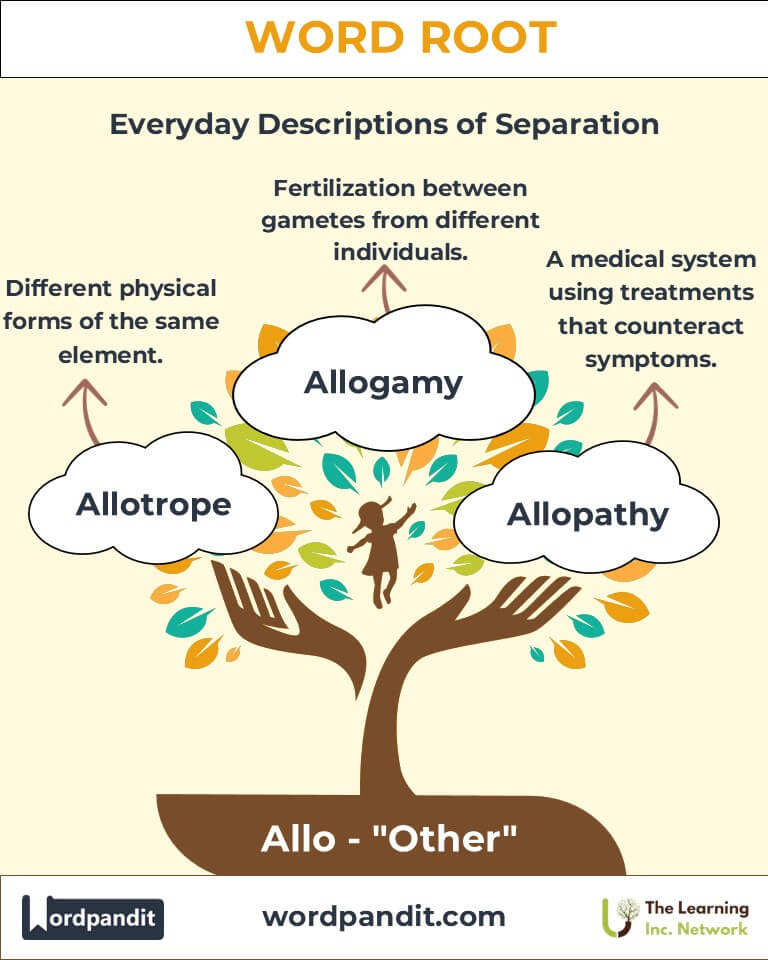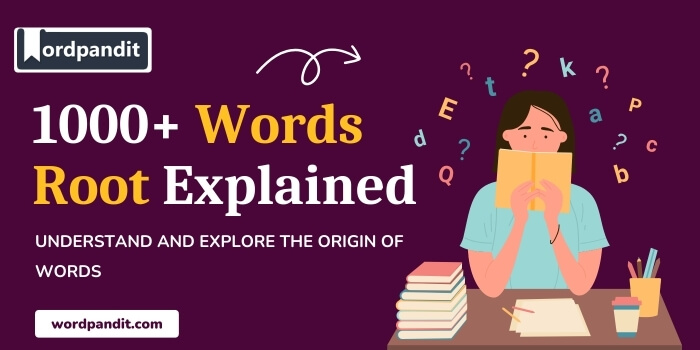Allo: The Linguistic Root of Otherness and Diversity
Discover the essence of the root "allo," derived from Greek, meaning "other." From the scientific marvel of allotropes to the biological significance of allogamy, this root reveals the beauty and complexity of difference across languages and fields.

Table of Contents
- Introduction: Embracing Otherness with "Allo"
- Etymology and Historical Journey
- Mnemonic: Unlocking the Power of "Allo"
- Common "Allo"-Related Terms
- "Allo" Through Time
- "Allo" in Specialized Fields
- Illustrative Story: "Allo" in Action
- Cultural Significance of "Allo"
- The "Allo" Family Tree
- FAQs about the "Allo" Word Root
- Test Your Knowledge: "Allo" Word Root Quiz
- Conclusion: The Living Legacy of "Allo"
Introduction: Embracing Otherness with "Allo"
The root "allo," pronounced al-loh, is a gateway to understanding concepts of difference and variety. Originating from the Greek word allos (meaning "other"), it serves as a foundation for terms that explore diversity and complementarity. Whether describing chemical structures in allotropes or biological processes in allogamy, "allo" highlights the beauty and necessity of "the other."

Etymology and Historical Journey
The journey of "allo" begins in Ancient Greece, where allos was used to denote "other" or "another." Over centuries, this versatile root enriched scientific, linguistic, and cultural vocabularies. By the 19th century, it gained prominence in fields like chemistry and biology, symbolizing distinctness within unity.
Mnemonic: Unlocking the Power of "Allo"
To remember "allo," picture a vibrant garden where every flower is unique, yet they all contribute to the garden's beauty. Think of "allo" as the essence of embracing difference.
Mnemonic Device: "Allo is for the 'other' that makes life fuller—like allotropes in science or allogamy in nature!"
Common "Allo"-Related Terms
- Allotrope (al-loh-trohp)
- Definition: Different physical forms of the same element.
- Example: "Diamond and graphite are allotropes of carbon, showcasing the versatility of this element."
- Allogamy (al-log-uh-mee)
- Definition: Fertilization between gametes from different individuals.
- Example: "Cross-pollination in flowers is a classic example of allogamy, promoting genetic diversity."
- Allophone (al-uh-fohn)
- Definition: Variations of a single phoneme in different contexts.
- Example: "The 'p' sound in 'spin' and 'pin' are allophones of the same phoneme."
- Allopathy (al-lop-uh-thee)
- Definition: A system of medicine that uses treatments causing effects different from the symptoms.
- Example: "Modern allopathy often uses antibiotics to counter infections."
- Allonym (al-uh-nim)
- Definition: A pseudonym used by an author, attributed to another person.
- Example: "The playwright published under an allonym to remain anonymous."
"Allo" Through Time
- Historical Context:
- Allotrope: Coined in the early 19th century during the rise of chemistry as a modern science.
- Allogamy: Rooted in botany and evolutionary biology, its study has shaped our understanding of plant reproduction and genetic diversity.
"Allo" in Specialized Fields
- Chemistry:
- Allotrope: Highlights how the same element can form vastly different materials, e.g., carbon as diamond and graphite.
- Biology:
- Allogamy: Essential for genetic diversity in plants and animals, contributing to evolutionary resilience.
- Linguistics:
- Allophone: Explores subtle phonetic variations, enriching our grasp of spoken languages.
- Medicine:
- Allopathy: A cornerstone of Western medicine, contrasting alternative approaches like homeopathy.
Illustrative Story: "Allo" in Action
In a bustling lab, Dr. Sita marveled at the allotropes of carbon under her microscope. She used these structures to inspire a lesson for her botany class on allogamy in plants. As her students cross-pollinated flowers, they debated how diverse contributions create something greater. The "allo" root in their experiments symbolized how variety enriches understanding and innovation.
Cultural Significance of "Allo"
The concept of "otherness" permeates culture, reminding us of the value of diversity. Philosophical discourses often reference "the other" in shaping identity and ethics, while in science, "allo" symbolizes the richness of variation, whether in materials or life forms.

The "Allo" Family Tree
- Hetero- (Greek: "different"):
- Heterogeneous: Diverse in character or content.
- Alter- (Latin: "other"):
- Alternate: Occurring by turns.
- Alteration: The act of making something different.
- Xeno- (Greek: "foreign"):
- Xenophobia: Fear of strangers or foreigners.
- Xenophile: A person attracted to foreign cultures.
FAQs About " Allo "
Q: What does "allo" mean?
A: Allo means "other" or "different." It originates from the Greek word allos, which refers to something distinct or separate from the usual or expected. This concept of "otherness" is foundational in many fields, from science to language.
Q: What are allotropes?
A: Allotropes are different structural forms of the same element. For example, carbon can exist as diamond (a hard, transparent structure) or graphite (a soft, opaque form). The concept of allotropy helps scientists understand how the arrangement of atoms affects an element's properties.
Q: How does allogamy differ from autogamy?
A: Allogamy involves the fusion of gametes from different individuals, promoting genetic diversity. In contrast, autogamy refers to self-fertilization, where the gametes from the same individual unite. For example, cross-pollination in flowers is allogamy, while self-pollination is autogamy.
Q: What is an allophone in linguistics?
A: An allophone is a variation of a single phoneme (basic sound unit) in different linguistic contexts. For instance, the "p" in "spin" (unaspirated) and "pin" (aspirated) are allophones in English. These subtle changes don’t alter the word's meaning but reflect the flexibility of sound production.
Q: What does "allopathy" refer to in medicine?
A: Allopathy is a system of medicine that treats diseases by producing effects opposite to the symptoms. For example, if a patient has a fever, an allopathic treatment might involve medications that reduce body temperature.
Q: What are the benefits of allogamy in nature?
A: Allogamy, or cross-fertilization, enhances genetic diversity in populations. This diversity can improve species' resilience to diseases, environmental changes, and other challenges, ensuring long-term survival and adaptability.
Q: What are some real-life examples of allotropes?
A: Common examples include carbon (diamond, graphite, and graphene), oxygen (O₂ as oxygen gas and O₃ as ozone), and phosphorus (white, red, and black phosphorus). Each allotrope has distinct properties and applications.
Q: How is "allo" used in social contexts?
A: In social and cultural discussions, "allo" often symbolizes the concept of embracing diversity and "otherness." For instance, it may refer to inclusion or the acknowledgment of alternative perspectives or identities.
Test Your Knowledge: " Allo " Mastery Quiz
1. What does the root "allo" signify?
2. Which term describes the phenomenon of cross-fertilization?
3. Which of these best illustrates allotropy?
4. What is an allophone in linguistics?
5. How does allopathy work in medicine?
Conclusion: The Living Legacy of "Allo"
The root "allo" invites us to celebrate diversity, from the atomic level to the ecosystems we inhabit. By understanding its applications in science, linguistics, and culture, we appreciate how "otherness" enriches our world. Let "allo" inspire you to explore and embrace the beauty of variety in life and learning.












